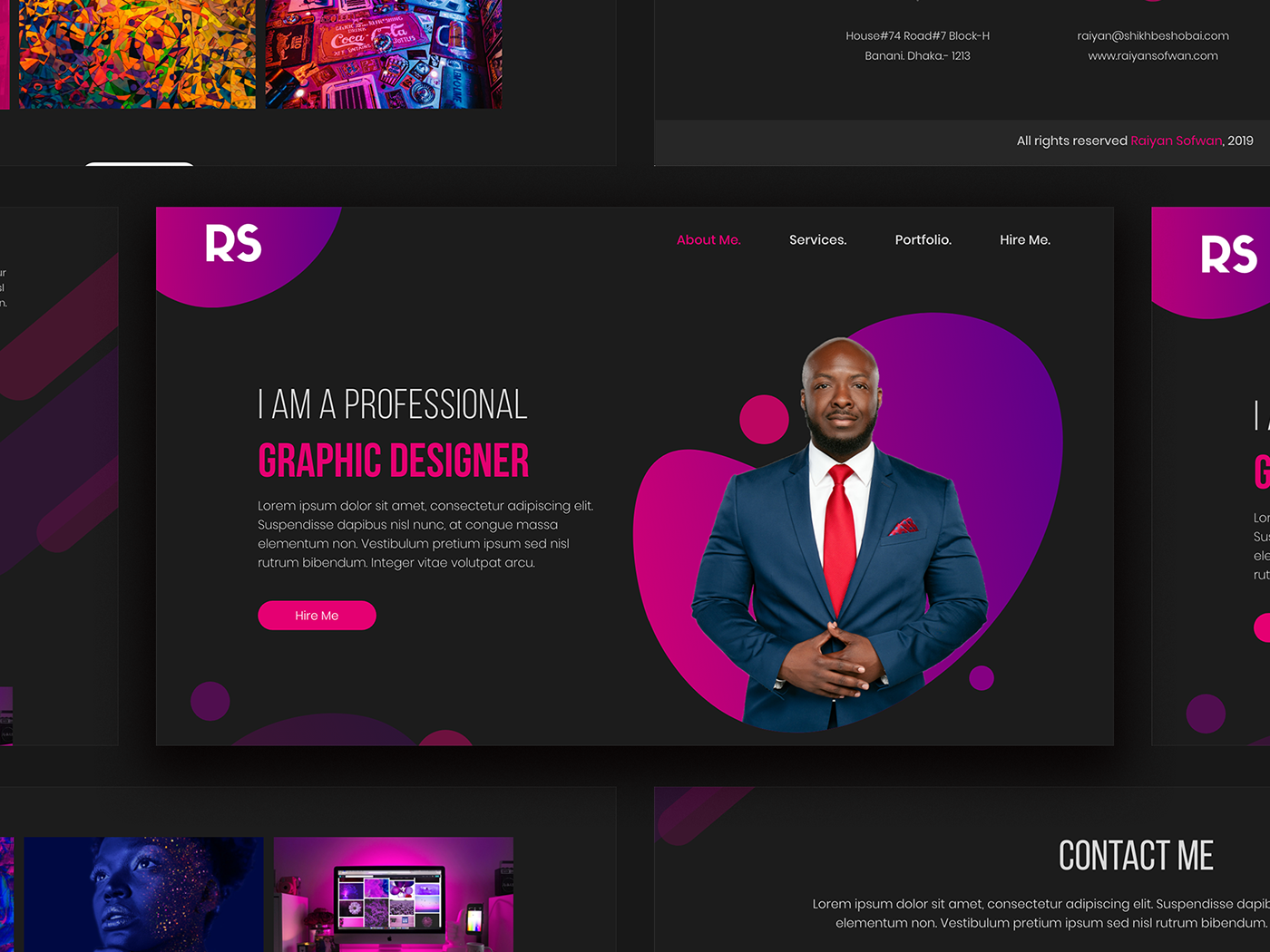Important Tips for Crafting High-Impact Site Styles
In the realm of digital advertising and marketing, the design of a site functions as an important touchpoint for involving possible clients. To develop high-impact website designs, one have to consider crucial aspects such as audience understanding, customer experience, and visual hierarchy. Each of these elements plays an essential duty in not just drawing in site visitors yet likewise in facilitating purposeful interactions. The interaction in between these elements can be nuanced and complicated, elevating the question of how to properly balance them to accomplish ideal outcomes. Exploring these approaches can lead to transformative outcomes for your online presence.
Understand Your Audience

To efficiently understand your target market, begin by carrying out market analyses to collect information on age, gender, place, and passions - website design. This details functions as a foundation for developing user personalities, which represent the crucial characteristics of your target market. These characters overview decision-making in style aspects and web content technique, guaranteeing placement with user assumptions
Furthermore, analyzing user behavior via devices like Google Analytics can expose exactly how site visitors communicate with your website. Metrics such as bounce prices and time on web page can highlight areas that require renovation or modification. Individual studies and responses additionally offer invaluable insights into choices and pain factors.
Ultimately, a deep understanding of your target market is not just beneficial but necessary. It empowers developers to create even more appropriate, attractive, and functional web sites that foster a favorable individual experience and drive wanted end results.
Prioritize Customer Experience
When designing a website, prioritizing individual experience (UX) is extremely important to attaining both user satisfaction and company objectives. A well-crafted UX ensures that visitors can browse the website easily, locate the details they require, and involve with material successfully. To accomplish this, it is vital to adopt a user-centered style approach that involves understanding user requires, choices, and habits.
Start by carrying out comprehensive research, consisting of customer surveys and usability testing, to gather insights into how users communicate with your website. This data ought to educate layout decisions, guaranteeing that layouts and functions line up with customer assumptions. Streamlined navigation is crucial; site visitors need to have the ability to locate information quickly without unnecessary clicks or confusion.
Additionally, consider the packing speed of your website. A slow-loading website can cause high bounce rates, adversely impacting individual experience. Enhance scripts and photos to improve efficiency.
Finally, make certain that your site comes to all individuals, including those with impairments. Sticking to ease of access standards not just widens your target market yet additionally cultivates inclusivity. By prioritizing UX, you lay the structure for an effective web site that satisfies both user requires and service objectives.
Embrace Visual Hierarchy
A well-structured visual pecking order plays a considerable function in enhancing user experience by guiding site visitors' attention to one of the most crucial components of a web site (website design). By tactically setting up web content, developers can create a clear course for customers to follow, ensuring they involve with vital info successfully
To implement aesthetic pecking order, begin by utilizing size and range. Larger aspects normally attract the eye, making them best for headlines or phones call to activity. Complement this with contrasting shades that highlight crucial areas, as lively hues can produce focal points that catch interest.
In addition, the positioning of aspects on the page is important. Leading the audience's look through the format can be attained by placing crucial details on top or in the facility, where users usually start their visual trip. Integrating whitespace around components can additionally enhance clearness, making it easier for users to process information without really feeling overwhelmed.
Finally, using typography successfully adds to visual power structure. Different font style styles, sizes, and weights can represent value, assisting users with the content flawlessly. By embracing these concepts, developers can produce an intuitive experience that cultivates engagement and urges individuals to discover additionally.
Optimize for Mobile
Mobile optimization is important in today's digital landscape, as a considerable part of internet traffic originates from mobile devices. To make certain a seamless user experience, web sites should be developed with mobile individuals in mind. This includes utilizing receptive web layout methods that adjust the design, pictures, and message to fit numerous display dimensions while preserving performance and aesthetics.

Touch targets, such as switches and links, should be properly sized, ensuring they are quickly tappable without mistakes. Make certain that kinds are mobile-friendly by minimizing input areas and using dropdowns where relevant, enhancing the customer experience.
Last but not least, test your web site across various smart phones and web browsers to determine any concerns that may affect functionality. By focusing on mobile optimization, you not only boost user contentment yet likewise positively influence your website's internet search engine ranking, thus bring in even more visitors and improving overall interaction.
Implement Strong Branding
Developing a well-known and natural brand name is fundamental you can find out more to developing a strong on the internet existence. A well-defined brand name not just differentiates you from rivals however additionally promotes trust and loyalty amongst your target market. To apply solid branding, begin by establishing a clear brand name identification that envelops your goal, values, and vision. This identity ought to be mirrored consistently across all digital touchpoints, including your web site, social media, and e-mail interactions.
Aesthetic components such as logo designs, color pattern, and typography play a critical duty in branding. Pick a color combination that resonates with your target market and reflects your brand name personality. Ensure that your logo design is versatile and plainly presented on your internet site, boosting brand name recognition.
Content is similarly crucial; your tone of voice ought to line up with your brand name identity, whether it's professional, friendly, or reliable. Engaging storytelling can better enhance your brand name, producing a psychological link with customers.
Conclusion
Finally, crafting high-impact site layouts demands a complex strategy that includes comprehending the audience, focusing on customer experience, and welcoming visual hierarchy. Optimization for mobile gadgets remains crucial, along with find out this here the execution of strong branding strategies. By integrating these elements, websites can successfully engage individuals, promote smooth navigating, and foster psychological connections that enhance brand name his response identification. Eventually, adherence to these concepts adds to the creation of engaging and reliable digital experiences that reverberate with target market.
To produce high-impact site layouts, one should think about crucial elements such as target market understanding, individual experience, and aesthetic hierarchy.When making a web site, prioritizing individual experience (UX) is extremely important to attaining both individual complete satisfaction and service purposes.Start by performing complete research study, consisting of individual studies and use screening, to gather insights into how customers interact with your website. To make certain a smooth individual experience, sites must be developed with mobile individuals in mind.In final thought, crafting high-impact internet site designs necessitates a multifaceted technique that includes recognizing the target market, prioritizing user experience, and accepting aesthetic hierarchy.